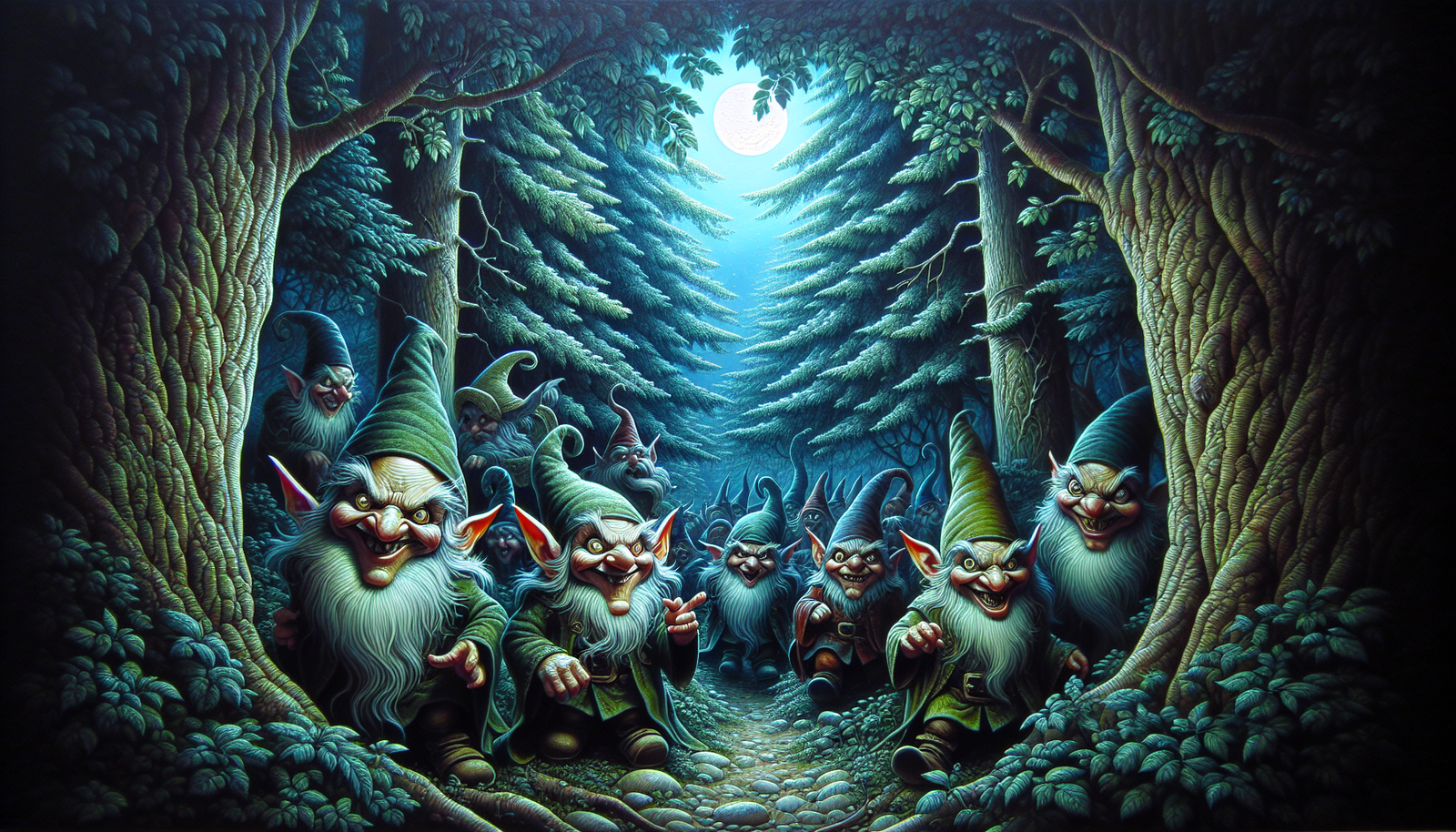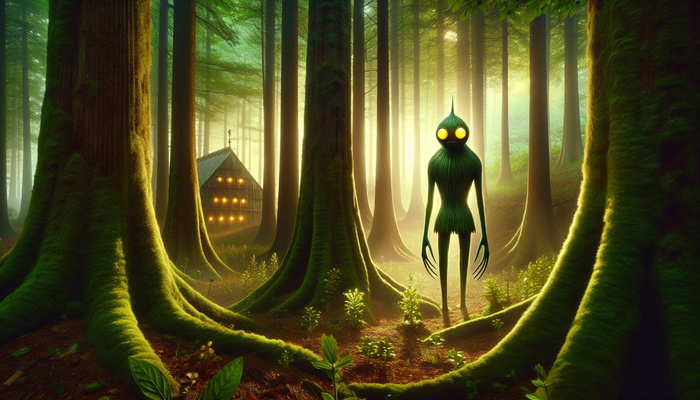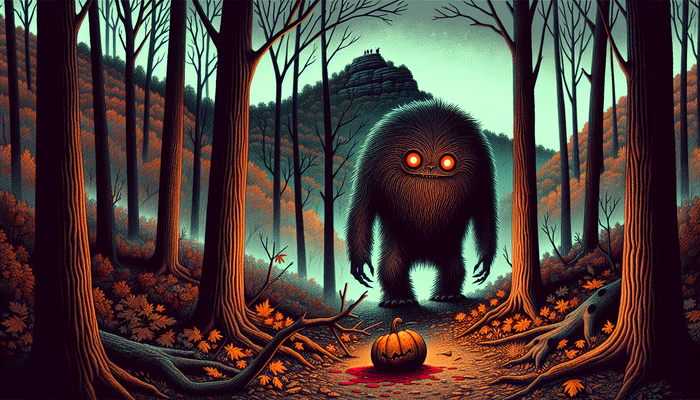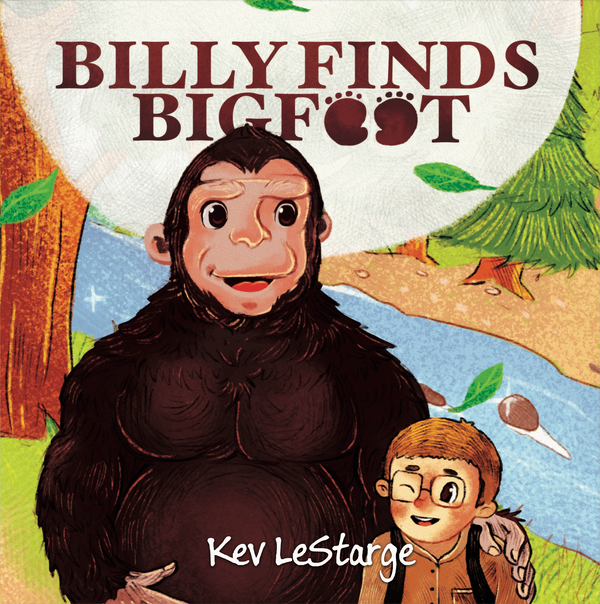Evil Gnomes: Exploring the Dark Side of Gnome Mythology

By Ava Martinez, Cryptozoologist
Deep in the shadows of folklore and myth, a darker breed of gnome lurks - the dreaded evil gnome. These malicious little creatures have been causing mischief and mayhem in stories for centuries, embodying some of our deepest fears and fascinations. But where did these wicked gnomes come from? What makes them tick? And why do they continue to capture our imaginations, even in an age of science and reason? Let's take a journey into the twisted realm of evil gnome mythology and find out.
The Origins of Gnomes
The concept of gnomes as we know it today has its roots in Renaissance-era alchemy and mysticism. The word "gnome" itself likely derives from the Greek "genomos," meaning "earth-dweller" - a fitting name for these subterranean sprites. In the 16th century, Swiss alchemist Paracelsus was one of the first to describe gnomes in detail, portraying them as shy, human-avoiding creatures who could move through earth as easily as we move through air.
But while Paracelsus's gnomes were mysterious and uncanny, they weren't necessarily evil. That darker shade of gnome emerges more clearly in the 18th century, with works like Alexander Pope's satirical poem "The Rape of the Lock." Here, gnomes are "dread imps" and "demons dire" who delight in petty household sabotage, like souring milk, blunting knives, and making servants oversleep. Pope's gnomes established a template for the gnome as a supernatural trickster and agent of minor chaos.
Gnomes as Jealous Guardians
As gnome folklore evolved, these earth-dwelling spirits took on an even more sinister aspect. Many tales paint them as jealous guardians of underground treasure, who resent human intrusion and go to great lengths to protect their hoards. They mislead miners and prospectors with false trails, cause cave-ins and landslides, and viciously punish those who steal even a single gold nugget.
The story of the Swiss town of Plurs, supposedly destroyed by a gnome-triggered rockfall in 1618, is a prime example of these bitter, vengeful gnomes. In this cautionary tale, the townspeople grew rich and decadent off the gnomes' gold - so the gnomes buried them alive for their greed and ungratefulness.
Trickster Gnomes
Other gnome legends emphasize their capricious trickster side. Puck, the mischievous sprite of English lore, is sometimes described as a gnome. The "Nisse" of Scandinavian folklore are domestic gnomes who demand respect and offerings from human households, and repay any slights with increasingly nasty pranks. In the humorous tale "The Nisse at the Grocer's," a nisse goes on a full-blown rampage of broken crockery and vengeful antics when his porridge is shortchanged.
But gnomes' tricks aren't always so lighthearted. In the Brothers Grimm fairy tale "The Gnome," an evil gnome lures a servant girl to his underground lair with false promises of wealth, then traps her there against her will. Many Celtic and Norse legends feature even creepier gnome-like creatures, such as the Duergar and leprechauns, who kidnap women and children, blight crops, and lead travelers to their doom.
Evil Gnomes in Modern Fantasy
Modern fantasy puts its own spin on the evil gnome trope. In C.S. Lewis's Chronicles of Narnia, the "earthmen" are an ancient race of gnomes enslaved and corrupted by the White Witch's dark magic. Even after her fall, some remain hateful and spiteful, unable to shake their ingrained malice. The svirfneblin or "deep gnomes" of Dungeons & Dragons are another memorable example - a cruel, greedy, xenophobic race who delight in undermining communities from their Underdark lairs.
Weaknesses and Foibles of Evil Gnomes
For all their supernatural menace, though, evil gnomes also have some surprising weaknesses and foibles. Many stories agree that they have an irresistible urge to steal alcohol whenever possible. In parts of Europe, they were thought to spoil milk and cheese out of sheer spite. The gluttonous nisse at the grocer's undoes himself through his uncontrollable greed for porridge.
These quirks may be funny, but they also highlight the gnomes' strange, liminal nature. They're magical creatures, but also weirdly petty and vice-ridden, prone to very human failings. At the same time, their appearance is just inhuman enough to be unsettling - with oversized heads and features, like uncanny dolls come to life. Evil gnomes walk a thin line between the familiar and the alien, the amusing and the unnerving.
Female Gnomes in Folklore
Female gnomes, when they appear in folklore, are often even creepier than their male counterparts. They're usually portrayed as ugly old crones who use magic to entrap and torment humans. The gnome-witch of Swiss legend, who imprisons a herdsman in her underground home until he wastes away into an unrecognizable old man, is a dark mirror image of the fairy tale bride.
The Enduring Appeal of Evil Gnomes
So what is it about evil gnomes that makes them so enduringly compelling? On one level, these pint-sized boogeymen are a way of embodying the unseen threats and anxieties that lurk at the edges of our safe, civilized world. They're the creeping sense that our homes and routines could be disrupted at any moment by some malicious outside force. And their underground realm is a potent symbol of the subconscious - the buried traumas and repressed impulses that bubble beneath the surface of the psyche.
But gnomes also represent something more primal and archetypal. These chthonic earth-spirits are manifestations of nature at its most raw and untamed. They're the flip side of Enlightenment rationality - the return of the irrational, the rejection of human rules and mores. With their crude vices and cruelty, evil gnomes are the id to civilization's superego. They're a reminder that beneath our reason and order, older, wilder energies still hold sway.
At the same time, there's something strangely alluring about the idea of the evil gnome. These creatures flaunt the rules and restrictions that hem us in. They caper gleefully in the shadows while we walk soberly in the light. Even as we fear them, we can't help but feel a sneaking admiration for their unabashed selfishness and hedonism. Through the evil gnome, we can vicariously thumb our noses at propriety and indulge our hidden fantasies of anarchy and release.
That's the secret power of the evil gnome archetype. These wicked little imps are tricksters in the truest sense - they cross boundaries, scramble categories, and call into question our tidy certitudes. They're agents of chaos and misrule, but also of revelation and transformation. When a gnome upends our world, they also open our eyes to new (if uncomfortable) truths about ourselves and the forces that move us.
Ultimately, that's why evil gnomes endure in our stories and our nightmares. They're not just cutesy garden ornaments gone wrong, or lazy symbols of the monstrous Other. Rather, gnomes are complex, paradoxical beings who embody both our darkest fears and our most secret desires. They're the unruly shadow-selves that we can never fully repress or control, the embodiments of the strange and undomesticated energies that pulse through the world.
In a sense, every evil gnome is a distorted reflection of the storyteller and the audience. When we peer into their glittering, malicious eyes, we're confronting something within ourselves - the parts of our own natures that are selfish, spiteful, greedy, and untamed. Gnomes may be fictional creatures, but the human impulses they represent are very real. By giving those impulses a name and a face, we're better able to grapple with them, to understand their power and their allure.
Modern Twists on the Evil Gnome Trope
Of course, as with any mythical archetype, the evil gnome is open to endless reinterpretation and reinvention. In recent years, we've seen some intriguing twists on the classic gnome story. The "traveling gnome" prank, popularized by movies like Amelie and the Travelocity ad campaign, imagines a world where gnomes long to escape their garden prisons and see the world. It's a playful spin on the old trope of gnome as domestic saboteur - instead of causing trouble at home, these gnomes gleefully upend their own lives and embrace the unknown.
There's a kernel of the gnomes' old chaotic spirit in these modern tales, even if it's channeled in a more benign direction. The impulse to break free, to transgress boundaries and defy expectations, is still there - it's just been repurposed for a world that sees gnomes as cute rather than creepy. In a way, these stories are a testament to the enduring adaptability of the gnome mythos. No matter how much our world changes, these impish earth-spirits find new ways to capture our imaginations and reflect our own inner wildness back to us.
The Significance of Evil Gnomes
As a cryptozoologist and collector of strange tales, I find the persistence of evil gnomes in our collective unconscious deeply fascinating. In my research into mythical creatures and unexplained phenomena, I've come across countless stories of gnome encounters, from the terrifying to the absurd. Each one offers a glimpse into the complex ways that these creatures have haunted the human psyche across centuries and cultures.
But I think the true significance of evil gnomes goes beyond any individual legend or sighting. In the end, these wicked little imps are important because they remind us of the fundamental strangeness and unruliness of the world we inhabit. No matter how much we try to tame and control our environment, there will always be pockets of wildness that resist our best efforts. There will always be things that lurk in the shadows and the depths, ready to unsettle our certainties and challenge our illusions of mastery.
Evil gnomes are one of the most potent symbols of that untamed otherness. They're the return of the repressed, the embodiments of everything we try to lock out of our neatly ordered lives. And yet, in their mischief and malice, they also reflect something deep within the human spirit. We can relate to their impish defiance, their gleeful disregard for the rules and strictures of "civilized" society. As much as they terrify us, gnomes also tantalize us with the promise of a life lived without inhibitions or constraints.
Perhaps that's the real reason why we can't seem to shake these pint-sized tricksters from our collective imagination. In a world that often feels too safe, too predictable, too hemmed-in by expectations and obligations, evil gnomes offer a temporary escape hatch. They invite us to indulge our own inner wildness, to caper and cavort in the shadows, if only for a little while. They give us permission to embrace the strange, the irrational, the uncanny - all the parts of ourselves that we're taught to fear and repress.
Of course, actually living like an evil gnome would be a recipe for disaster. We can't spend our lives lurking in caves, hoarding treasure and tormenting innocent passersby. Sooner or later, we have to emerge into the light and learn to balance our unruly impulses with the demands of life in a social world. But that doesn't mean we have to completely disavow our inner gnomes, either. By learning to acknowledge and make peace with our own darkness, we can harness its power in a more positive way.
That's where stories come in. When we spin tales of evil gnomes and their misdeeds, we're not just indulging in cheap thrills or lazy stereotypes. We're also doing important psychological work, creating a safe space to confront and explore the shadow-sides of our own natures. By projecting our darkest impulses onto these mythical imps, we gain a measure of symbolic control over them. We can grapple with them, laugh at them, and ultimately integrate them in a healthy way.
Conclusion
So maybe the next time you see a garden gnome peering out from behind a bush, or hear a strange scratching sound in the walls of your home, don't be too quick to dismiss it as just your imagination. It might be an evil gnome come calling, ready to challenge your assumptions and shake up your neatly ordered world. And who knows? If you approach it with an open mind and a willingness to confront your own inner wildness, you might just learn something valuable in the process.
Because that's the final lesson of the evil gnome, the one that lies at the heart of all their unsettling allure and uncanny power. As much as we might fear the darkness and disorder they represent, we also need it. We need the unruly energies of the unconscious, the irrational wisdom of the dream, the creative chaos that breaks us out of our ruts and spurs us to grow. Without a touch of gnomish mischief in our lives, we risk becoming stagnant, complacent, cut off from the vital forces that make us fully human.
So here's to the evil gnomes, in all their impish glory. May they continue to haunt our stories and our psyches, reminding us of the strange, wild, and wonderful world we inhabit. May they keep us honest, humble, and ever-alert to the mysteries that lie just beneath the surface of our lives. And may they always be there to offer us a crooked grin and a glint of chaotic wisdom, even in our darkest and most uncertain hours.
Because in the end, that's what evil gnomes do best. They shake us out of our complacency, challenge our assumptions, and force us to confront the unruly shadows within ourselves. They're the tricksters and the truth-tellers, the agents of chaos and the harbingers of change. And as long as there are stories to be told and imaginations to be ignited, they'll be there, lurking in the depths of our collective dreams, ready to work their mischievous magic on our unsuspecting minds.
So the next time you feel a shiver down your spine or a prickle at the back of your neck, don't be too quick to dismiss it as mere fancy. It might just be an evil gnome, grinning impishly in the shadows, inviting you to embrace your own inner wildness and step off the beaten path. And who knows where that might lead? One thing's for sure - with a gnome as your guide, it's bound to be one hell of a ride.
From Bigfoot to UFOs: Hangar 1 Publishing Has You Covered!
Explore Untold Stories: Venture into the world of UFOs, cryptids, Bigfoot, and beyond. Every story is a journey into the extraordinary.
Immersive Book Technology: Experience real videos, sights, and sounds within our books. Its not just reading; its an adventure.



























